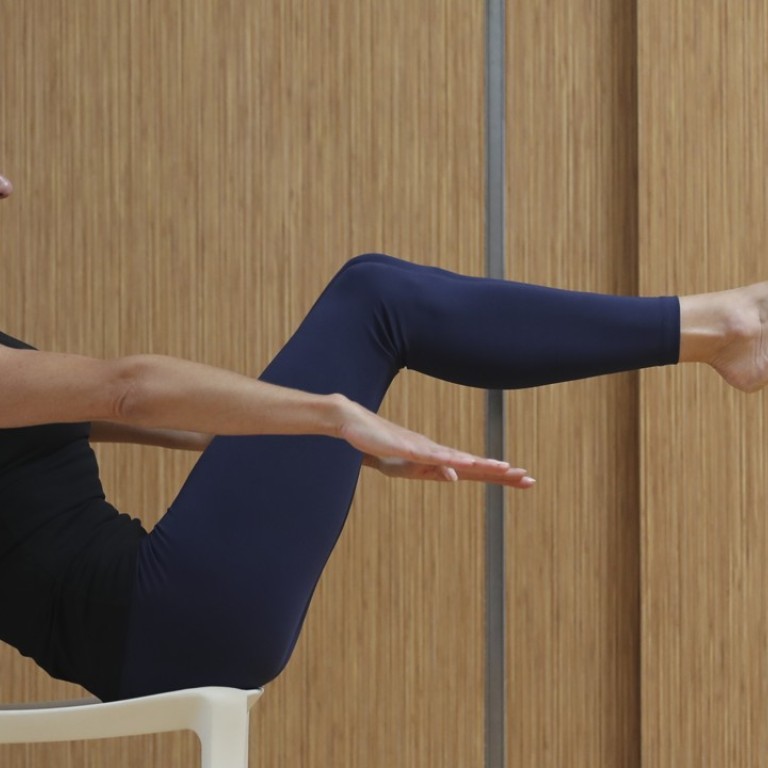
Seven in-flight exercises to survive and thrive on long-haul trips
Exercises to boost circulation, reduce swelling, activate core muscles and stretch your body, plus more tips to ensure you arrive at your next destination in top form
Dreading your international flight (and the jet lag) this summer? We can’t promise you it won’t be tiring, but there are ways to reduce the physical impact of such cramped conditions.
To make the process simple, here are top exercise tips (and a couple of dietary hints) so you can make the most of your precious holiday time on arrival.
The ultimate guide to long-haul travel with young children
Try to get a good workout in before you board the plane, on the day of your flight if possible. Vigorous exercise releases endorphins, feel-good hormones that help us deal with discomfort better. Endorphins coursing through your veins just before embarking on a mostly sedentary experience can only be a good thing.
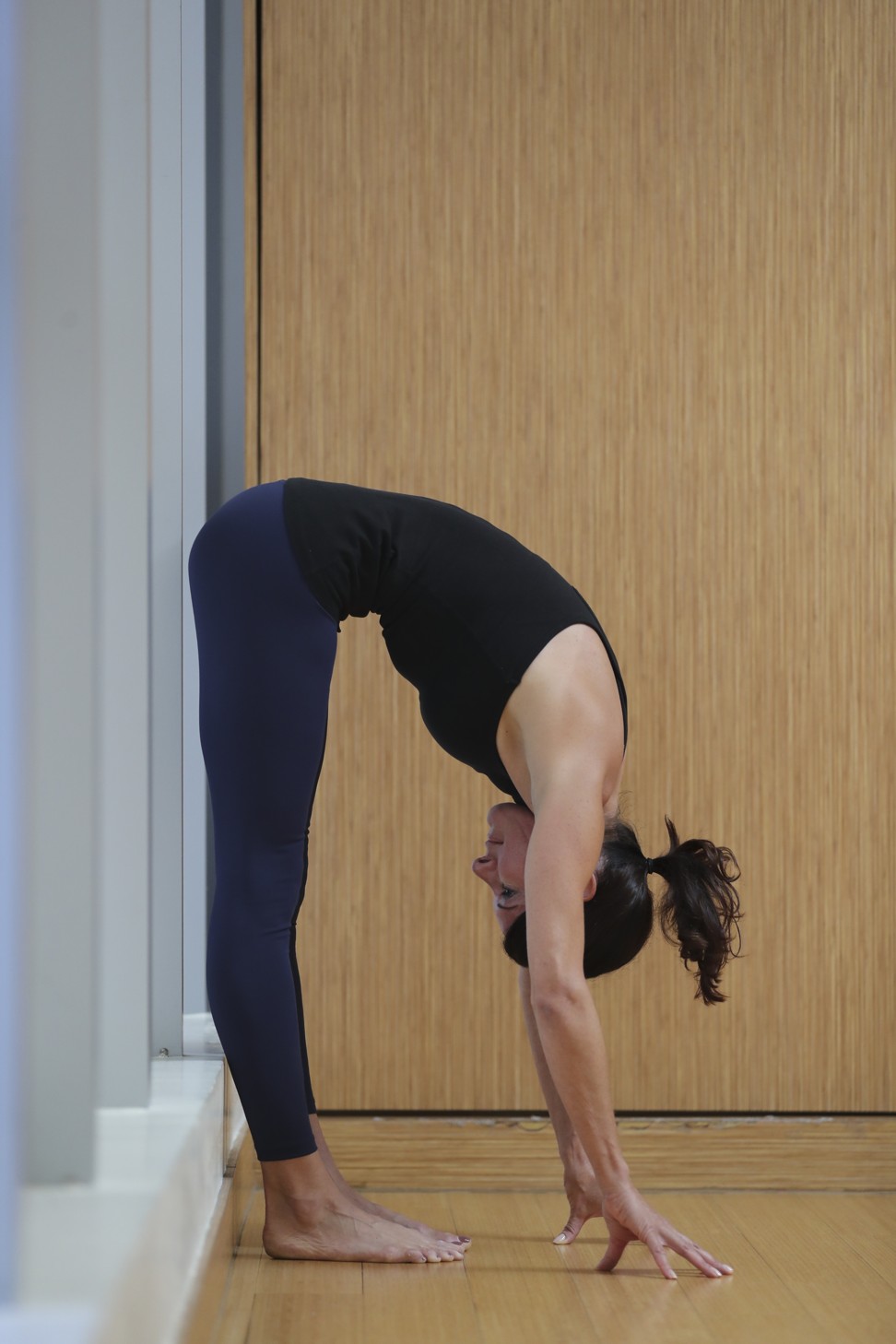
1 Standing roll down
While a couple hours sitting and watching a film might be welcome, the need to stretch will soon arise. Move to the back of the plane and use whatever space you can outside the food and beverage curtain or the bathroom doors. Stand with your feet hip width apart and raise both arms overhead. Engage your core, being mindful not to arch your back. Soften the shoulders down the back and on an exhale, reach up and bend over, rolling down the spine, as if you were diving into water. Pull your abdominals into the spine as much as possible, and visualise articulating each vertebra. If you can’t touch the floor without bending your knees, that’s fine. Most importantly, keep the core engaged and ensure the shoulders are not hunched.
Six travel pillows to help you sleep on long-haul journeys
This is all about getting the blood and lymph flowing, stretching your lower back and hamstrings, and firing your abs. After your third inhale while touching your toes, exhale as you very slowly move back up the same way you went down – vertebra by vertebra. Your head should be the last thing to come up. Before moving on to your next exercise, take a few laps up and down the aisles.
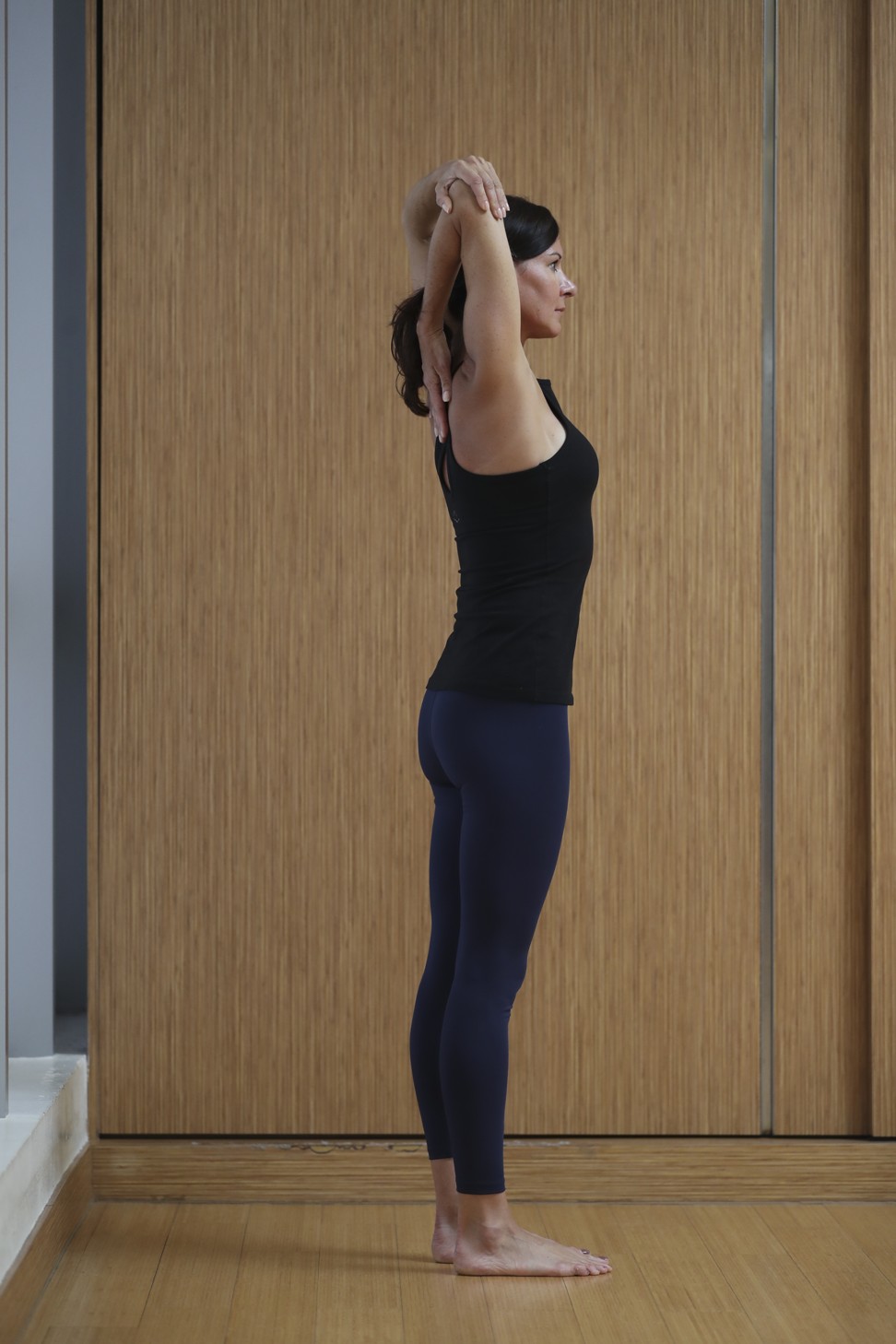
2 Triceps and neck stretch
Standing in the same way as before, raise one arm above your head, then bend at the elbow, placing your palm in the middle of the top of your back. With the other hand, gently pull on the other elbow, keeping your palm in place. Shoulders should be down, core engaged. You can gently press your head against the arm that’s down your back as this will release tension in your neck too while also giving a good stretch to the triceps. Do this on both sides to the count of 10. You can also do this when seated.
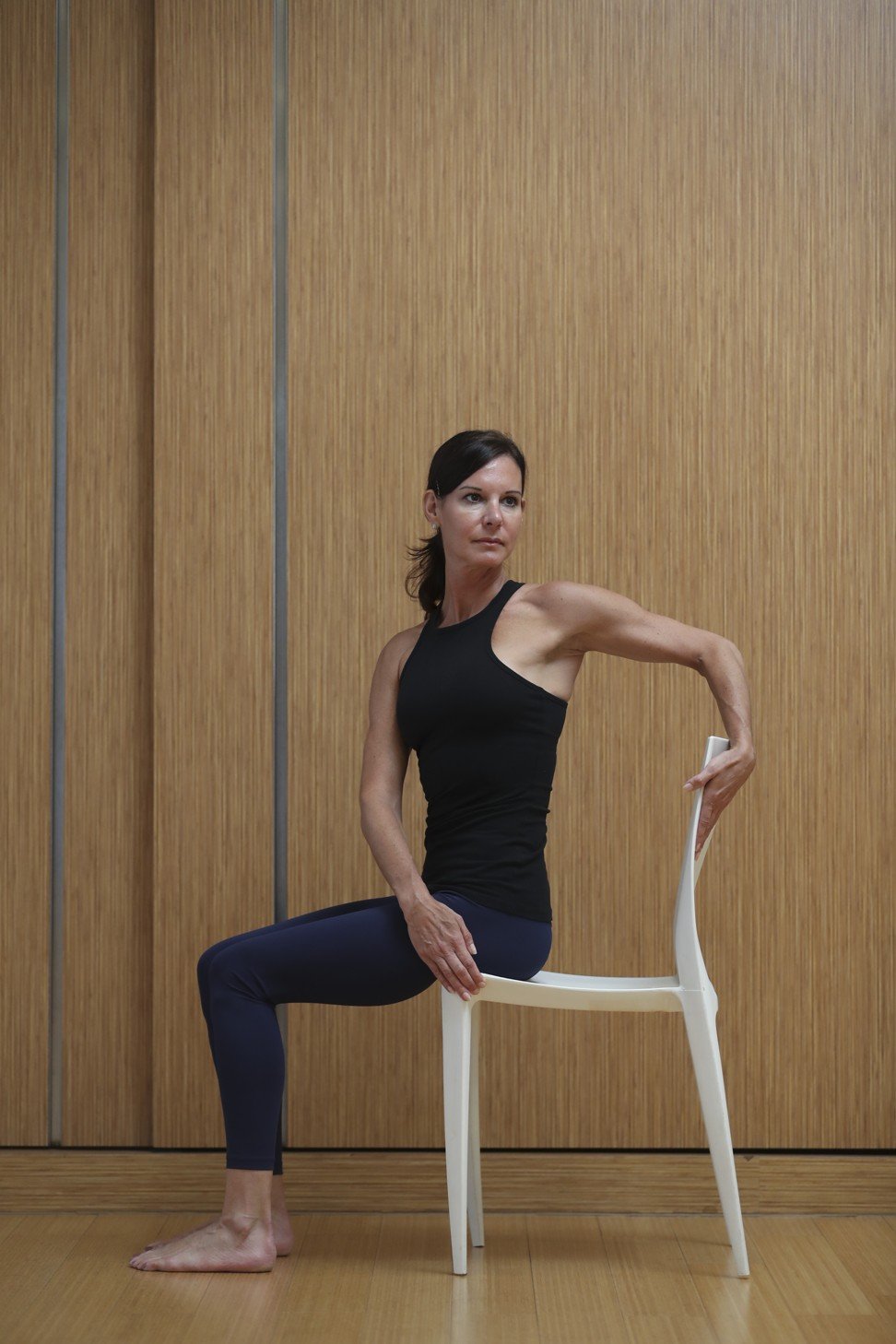
3 Seated twists
Raise your seat back to almost straight. Sitting with feet firmly planted on the floor, engage your core and turn your upper body to the right without moving your legs, feet or hips. Turn your head to try to look over your shoulder. If you can, use your right hand to pull against the head rest for a deeper stretch. Hold for a slow count of 10. Repeat on the other side. This should help release your lower and middle back. Go for another few laps of the aisles.
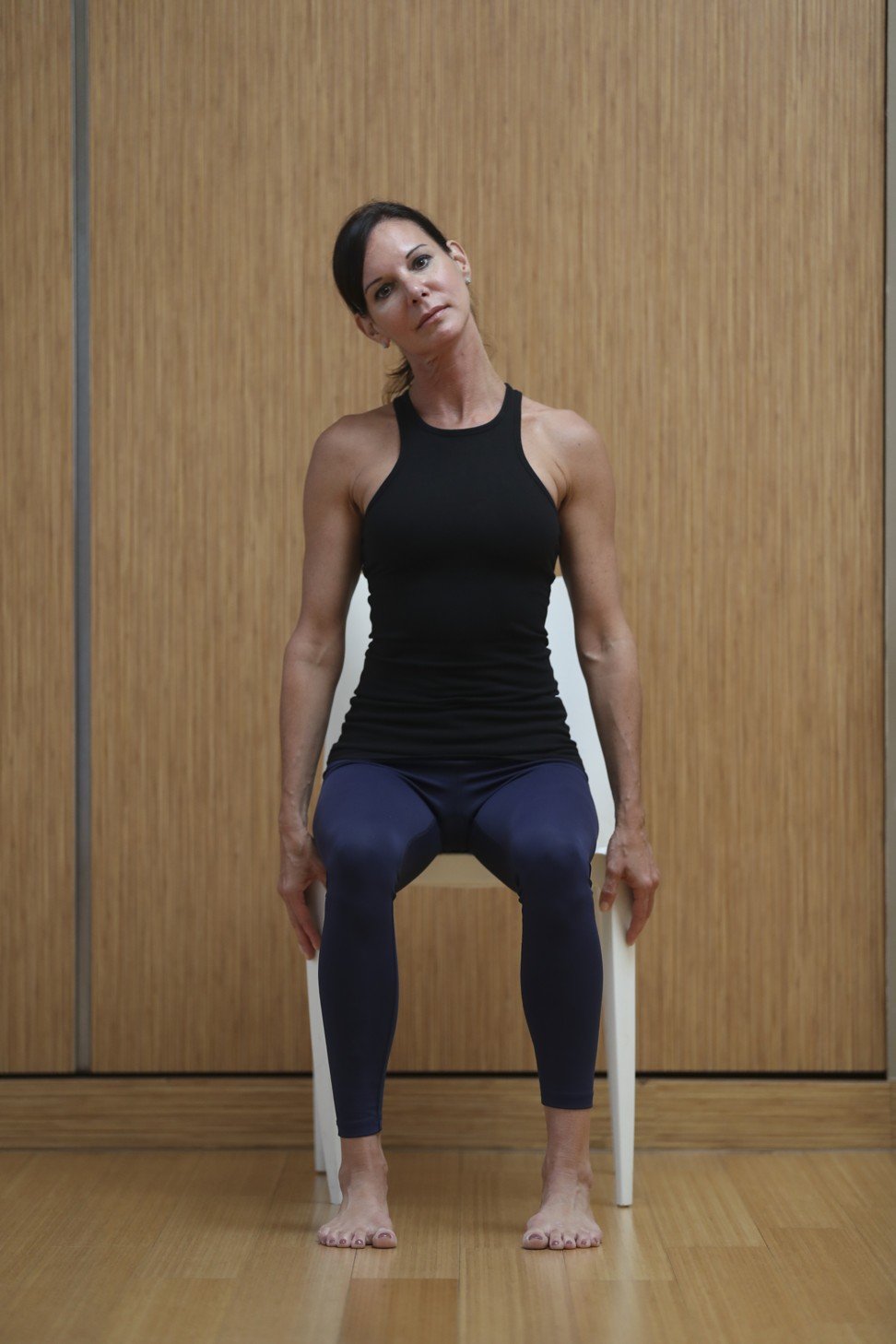
4 Neck rolls
Sit with your back flush against the seat back (raise the seat if you had it reclined). Lower shoulders down, feeling the pull of the scapula down your back. Engage your core and gently bend your head to the right, as though reaching your ear to your shoulder. Chin is tucked as much as possible. Then roll your head anti-clockwise several times. Repeat with on the left side, turning your head clockwise. Breathe slowly throughout. You can also do this with the fingers interlaced behind the back, drawing the hands down to traction the shoulders as you do the neck rolls for a deeper stretch.
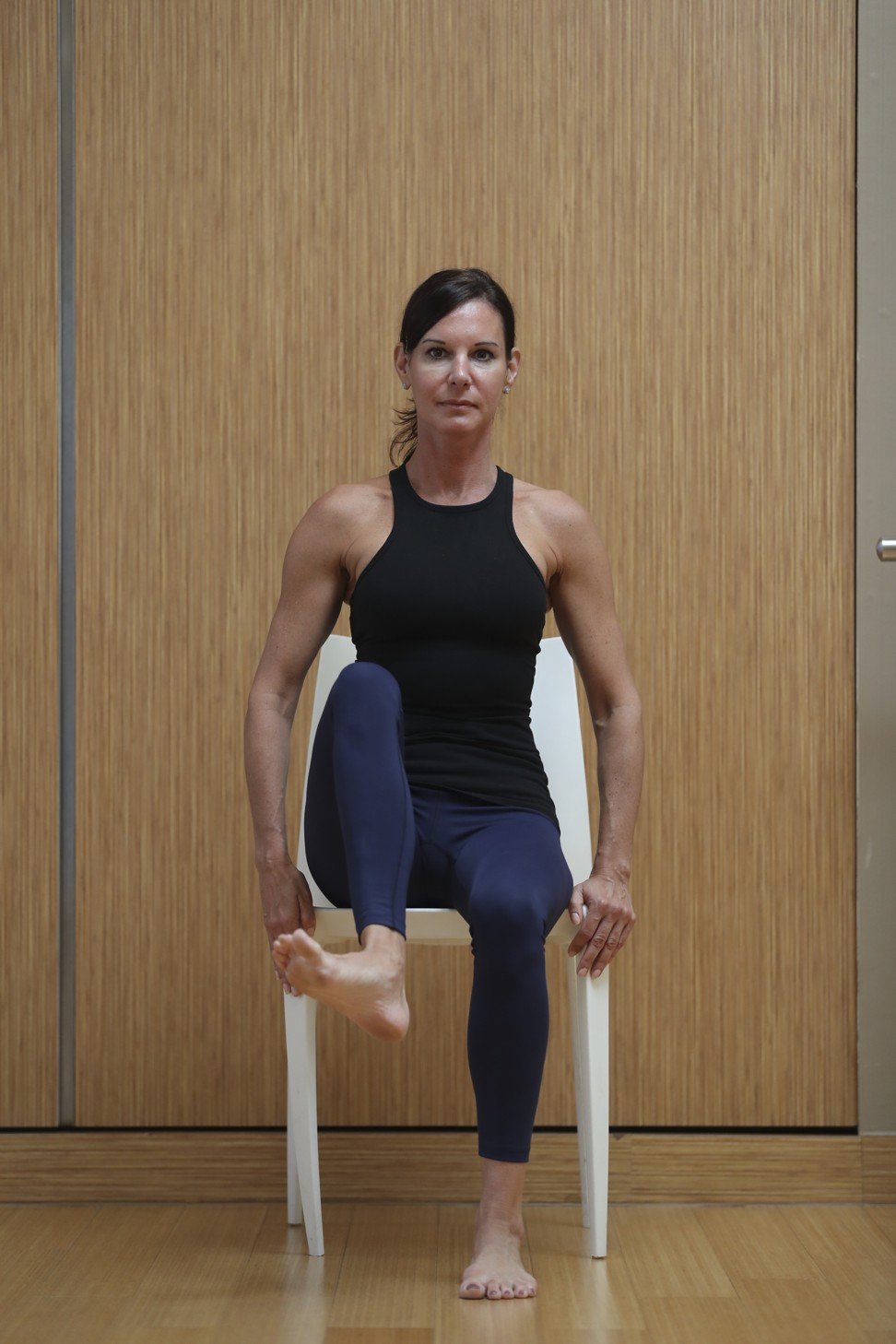
5 Ankle rolls
Whenever you’ve been sitting still for more than 30 minutes, try this one out. In the same seated position as the previous exercise, raise one foot off the ground with knee bent at a 90 degree angle, engaging your core and keeping your back straight. Simply roll your ankle in one direction several times and reverse it. Do the same on the other leg. This can be done as often as you like. It will also give your thighs a little workout and get the blood flowing to your potentially puffed up extremities in the pressurised cabin.
How to survive a long-haul flight: the apps and gear you need
6 Pump breathing
Think you can’t do an ab exercise on the plane? Think again. In the same seated position as the previous two exercises, inhale fully, allowing your belly to expand. Then start pumping your belly in and out (at a fast pace) to the count of 30, with sharp exhales on each outward motion as you pump the belly in and out. Really force the abs right in to the belly button with each short, sharp exhale. This is believed (in yoga) to increase energy and calm the mind. Not only that, it works your core muscles while you are seated.
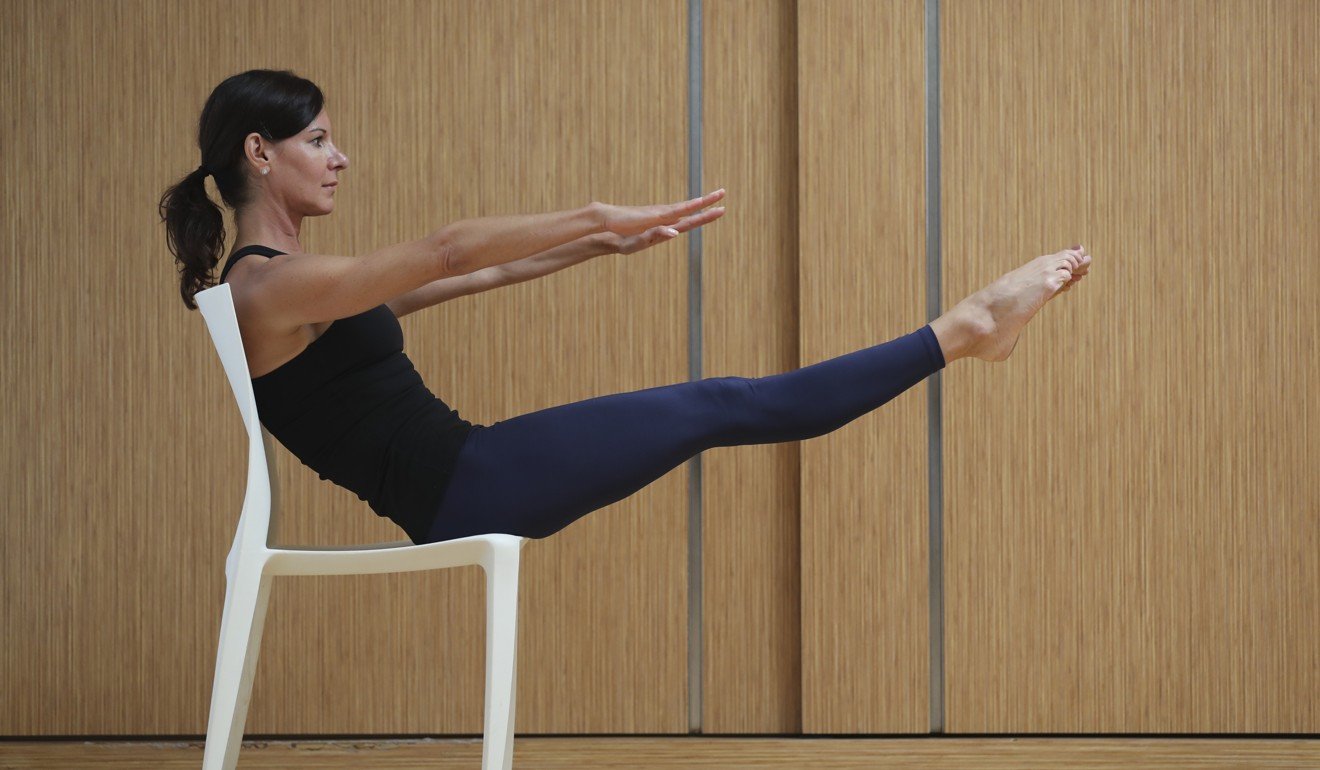
7 Pilates 100s
If you’re in business or first class, you can do Pilates 100s in your seat. The 100s is traditionally the first of the Pilates sequences. It involves lying on your back, legs straight and pressed together on a 45 angle, feet in a small V, arms reaching forward, head raised and belly flat against the spine. You then pump your arms to the count of 100 (in rounds of 10), breathing out with each pump. It works every muscle in the body and requires only the space of your in-flight ‘bed’.
Taken as a whole, all the exercises above will maintain blood circulation and reduce swelling, activate core muscles, stretch the body and work your respiratory system. These movements will help you to better adapt to a new time zone, and function more effectively upon arrival.
And a last few words of advice on diet and jet lag
• Airline food is often loaded with sodium and fat. If there is a healthy meal option, take it. Pack your own snacks and avoid purchasing muffins or greasy pizzas when bored in the airport. Go for crudités (carrot, celery, cucumber sticks, cherry tomatoes) as they’re high in fibre. You don’t want to be left hungry, so pack in some protein to make you feel fuller. Choose from mixed nuts, dark chocolate and dried fruit or some cheese and apple. If you want a little more, make a wrap with lettuce leaves and fill it with grated carrot, cheese and a protein.
• Stay hydrated. Drink plenty of water throughout the flight and take your own herbal tea bags.
• On arrival, stay awake as long as possible. Go for a walk outside (ideally in the sun, as this directly affects our circadian rhythms, or internal clock, which is out of whack with the external clock when we fly across time zones). Going straight to sleep on arrival will only worsen the jet lag.
• Try to eat a proper meal upon arrival according to the new time zone, to help you refrain from overeating or snacking when jet lag really kicks in.

